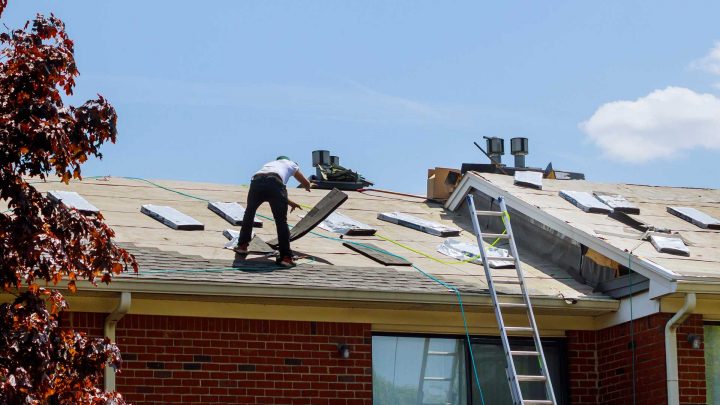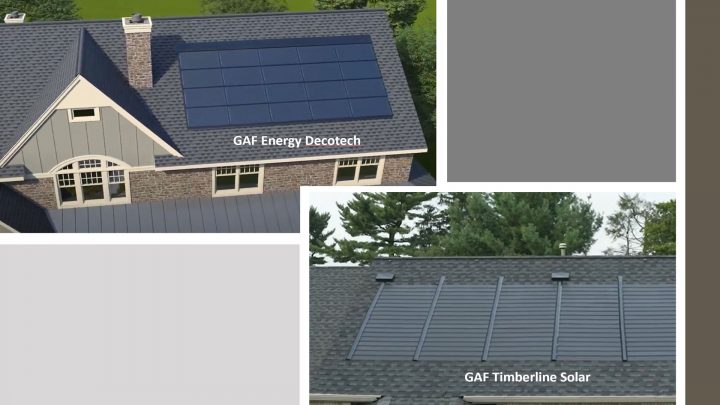Most homeowners in the US only have to replace their roof twice if they install a quality, 30 year lifetime shingle. Those living in Florida aren't so fortunate as new laws require homeowners to replace any asphalt shingle roof that's 15 years old. My daughter-in-law learned from her insurance company that replacing a roof was key to maintaining her homeowners insurance.

This article analyzes three roofing estimates (those received by my daughter-in-law). It provides insight into how to read an estimate, the key decisions you have to make which affect the cost, along with the steps involved in replacing a roof.
How Big is Your Roof?
We measure the size of our homes by square feet but the size of your roof is either bigger if you have a one-story home … or smaller if you have a 2-story house. So the first thing every roofing company does is measure your roof, as that's what an estimate is based on.
The funny thing is roofers forget their industry measurements mean nothing to the typical homeowner. Even more confusing, the estimates used different terminology:
- Estimate #1 – 90 architectural shingles and 30.66 “service labor”.
- Estimate #2 – 28 sq shingles.
- Estimate #3 – 27.55 sq surface area.

Here are the roofing terms that will help you understand your future roofing estimates:
- Roofs are measured in squares where one square = 100 square feet.
- Asphalt shingles are sold in bundles and three bundles = one square (roughly 100 sq ft). For estimate # 1, the 90 shingles meant 90 bundles of shingles to re-roof 30 squares.
- The number of shingles in a bundle will vary. 3-tab asphalt shingles have 26 shingles per bundle while you'll find only 21 architectural shingles per bundle. That means architectural shingles are larger as their square footage is roughly the same.
- The weight of a bundle of shingles is what's important as most often, bundles are carried up a ladder by roofers, one bundle at a time.

What Estimates for Replacing a Roof Should Include
Working with my daughter-in-law, I wanted to help her find a reliable roofing company while letting her make the decision. As I've always recommended getting three estimates, that's what we did. While I had fun reading/analyzing the estimates (what you're reading here), the differences were shocking and made me realize how impossible it is for most homeowners to compare contractor estimates based on anything but price.
Roofing Estimate #1 – included a detailed list of materials for the project similar to what I'd provide for my handyman estimates. Material quantities and pricing were also provided.
Roofing Estimate #2 – focused on contract terms, how insurance claims are handled and a very high level description of the work to be performed when replacing a roof. Pricing was given for the total project plus potential extras for replacing any roof deck plywood, underlayment, etc.
Roofing Estimate #3 – was created using the insurance industry's estimating software, Xactimate. This software provides accurate pricing but it's only as good as the estimator. My analysis found no mention of valley materials missing so …

| Roofing Materials | Estimate #1 | Estimate #2 | Estimate #3 |
| Shingle style identified | Architectural | Architectural laminated | Laminated composite |
| Shingle brand identified | No brand specified | No brand specified | No brand specified |
| Shingle warranty identified | 30 yr lifetime | No warranty specified | No warranty specified |
| Underlayment | Peel & stick; valley metal flashing | Synthetic, double layer; Ice/water membrane in valleys | Synthetic but valleys not listed? |
| Drip edge | 6 in metal drip edge | Materials not specified | Materials not specified |
| Ridge vent | Metal ridge vents | Materials not specified | Continuous ridge vent, shingle over |
Once you've got your materials, it's time to estimate the labor to install them …

| Roofing Labor | Estimate #1 | Estimate #2 | Estimate #3 |
| Building permit | Permit fees, inspections & recording fees | Pull applicable permits | Missing but required! |
| Remove old shingles | ✓ | ✓ | ✓ |
| Bring roof deck up to compliance | Missing but required! | Re-nail decking per code | Re-nail roof sheathing |
| Install architectural shingles | ✓ | ✓ | ✓ |
| Clean up & dispose of debris | ✓ | ✓ | ✓ |
| Installation warranty | Missing but you want it! | 5 yr warranty on workmanship | Missing but you want it! |
Decisions Homeowners Must Make When Replacing a Roof
The decisions a homeowner must make when replacing a roof are both easy and difficult. A roof is likely the most expensive renovation you'll make to your home, one that provides no improvement to your lifestyle like a kitchen or bathroom remodel.
- How long do you expect to stay in your house? This important prediction can help decide on your roofing budget from low cost to higher costs today for longevity. If moving soon, two cost saving decisions include:
- Installing a new roof on top of the existing roof avoids the cost of removing and disposing of the old roof. Rarely a good idea, it means you can't see the problems hiding under the shingles.
- You can pick a cheaper, 3-tab shingle to save costs.
- Architectural shingles are typically the minimum quality you should pick but even they come in various quality levels by thickness, height and of course color. Ask to see samples of the different choices to help you make the best decision.

- Energy efficient asphalt shingles using cool-roof technology, are another option. They're engineered to have higher solar reflectance and thermal emittance properties that can help reduce a home’s cooling load on hot, sunny days … and while they'll cost more to install, they should save you money from running your air conditioner less. Here's how Owens Corning cool roofing shingles work.
- Solar is another decision you should consider when replacing a roof. And I'm not talking about the panels that sit on top of your roofing shingles. There are now integrated solar shingles like those shown above from GAF, that are part of your roofing system.

How Much Will a New Roof Cost?
Your decisions above will affect the cost of replacing your roof. The two biggest cost items are the shingles you pick and labor. Quantity and time are out of your control as they're based on the size and style of your roof. So the easy answer is you should expect to pay between $425 to $650 per square (100 sq.ft.) to replace your asphalt shingle roof.
If you want to dig deeper, a great resource is RoofingCalc.com, which covers not only asphalt shingles (80% of US homes) but many other types of roofing materials. Here are some of the things you might want to look into … but this is a blog post, not a book!
- Shingle costs vary based on quality:
- 3-tab, 25 yr shingles are at the low end. You can expect to replace them in 15 to 20 years.
- 30 yr, architectural shingles are in-between in cost and lifetime (20 to 25 yrs).
- Premium shingles with a 50 yr warranty cost more but probably won't last more than 30 yrs.
- Installation cost factors include how steep (pitch) is, ease of access, height of the roof, plus the number of chimneys, skylights and dormers/valleys.
- Replacing any portion of the roof deck (plywood) due to wood rot, will add costs.
- Asphalt shingle characteristics that might be more important to you:
- Organic substrate made from cellulose fibers – can have 40% or more asphalt content making them heavier, thicker and able to absorb more damage.
- Fiberglass based substrate shingles – are lighter with more durability, strength and they have a higher fire rating than organic shingles.
PS Here are some other useful articles on roofing, to help you replace your roof:




Leave a Reply